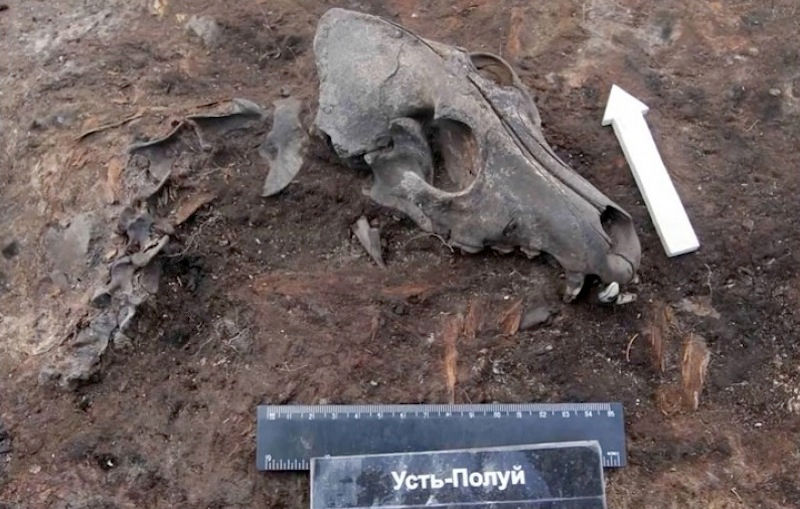
PHOTO: LiveScience
SALEKHARD, RUSSIA – Archaeologists have found the remains of a 2,000 year old graveyard near the Arctic Circle. Why’s it special? Well, it doesn’t contain people. It contains the carefully buried remains of ancient, beloved dogs. The archaeologists believe the dogs were both pets and work animals. Sometimes they were even a reliable food source for the people at the site.
The site, called Ust-Polui, is in Russia’s Siberia, and according to Robert Losey, who works at the University of Alberta in Canada, the role of dogs in the cultures and lives of the people who once lived there was highly varied. However, the site is unique among other dog burials in the area because of the sheer number of dogs buried there. There’s over 115 dogs represented at the site. Researchers have found 10 dogs at most at other contemporary sites in the same area.
Siberia was filled with a mixture of indigenous peoples. People first came to the area in 45,000 BC and spread east after that. It was a densely populated area of central Asia, boasting hundreds of archaeological sites. Iron was an unknown resource, but bronze, silver, and goldwork were all popular. The earliest cultures were of Turkic and Uralic cultures, though the area was later invaded by the Mongols.
Some of the dogs were very important. Many were used to pull sleds. Two sleds were found at the site alongside a carved bone knife handle that depicts a sled dog in a harness. Researchers also believe some of the dogs were used for hunting reindeer and birds. Both kinds of remains were found in the site’s trash pits.
Even so, the dogs were not above being butchered for meat- something common in ancient cultures, especially in the Arctic. While some dogs were buried with love, indicating they had been useful companions during their lifetime, other dog bones were scattered around the site. They had knife cuts in them, and were mixed with the bird and reindeer bones.
One burial in the Ust-Polui site is unique among all the other dog burials. Archaeologists digging around at the site found fifteen dog heads all buried together. Each had their skulls smashed in in the exact same way, suggesting a ritual sacrifice.
Ust-Polui was not alone in this. Many other cultures in Siberia sacrificed their dogs to make angry spirits happy and favorable again, or to ensure the health and safety of the village.
The sled and hunting dogs would have been an important, valuable asset to the community. As such, it makes sense that they would be a common choice of sacrifice. Something worthwhile had to be sacrificed in order to appease the spirits. The dogs were a logical choice.
Even if at least fifteen dogs had been sacrificed, there were some dogs found at Ust-Polui that were obviously extremely special, cherished pets. Five of the 115 dogs that were identified at the site were buried in a group at the edge of the doggy-graveyard. Archaeologists believe these five dogs had extremely close bonds with some important people in the community. The dogs were buried in the same way the humans at the site were buried, just in a different location. This suggests they were very important and loved by the people living there.
At Lake Baikal, an area that was originally inhabited by Mongol cultures, a similar site has been found. However, this one differs from Ust-Polui in that the dogs were never eaten and never sacrificed. Here, the dogs were buried with special ornamented collars, and were buried with their own treasure.
Dogs have been man’s best friend for thousands of years, ever since humans first domesticated them from wolves. Sites like Ust-Polui and Lake Baikal are evidence of that.

